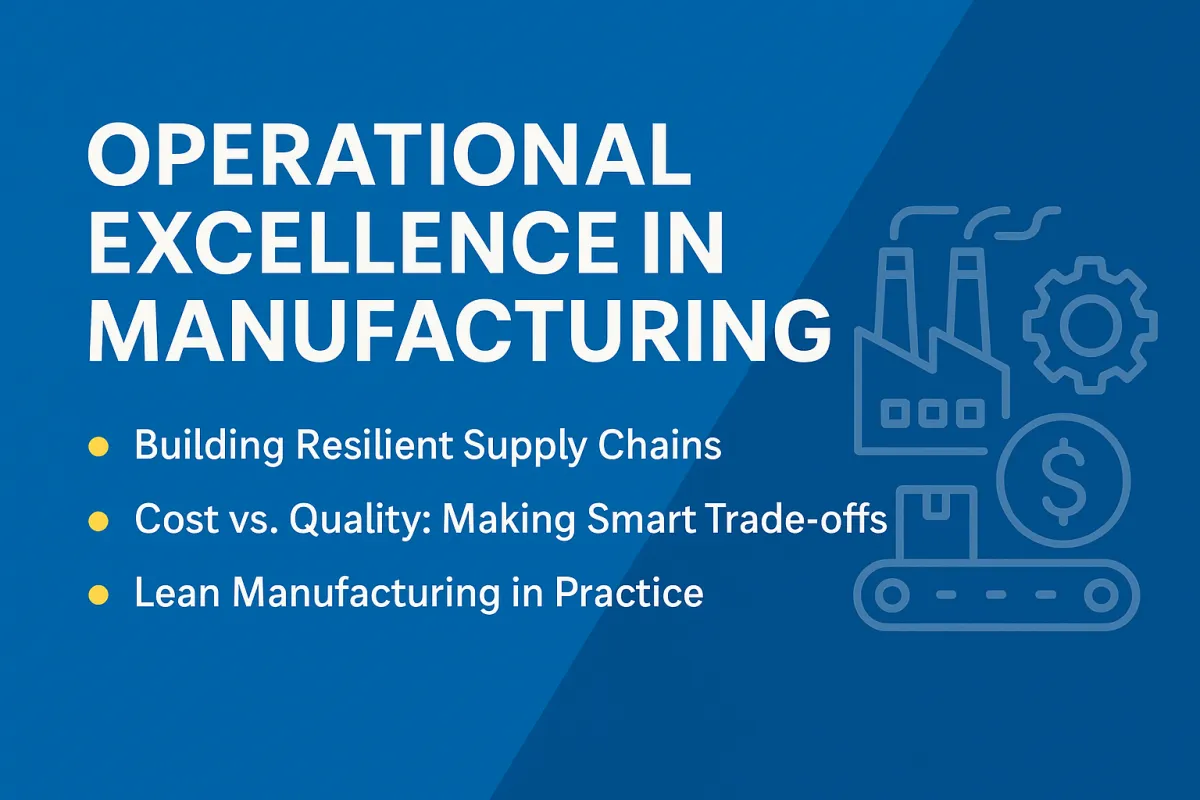
Operational Excellence in Fabrication: Building Stronger, Smarter Supply Chains
Operational Excellence in Fabrication: Building Stronger, Smarter Supply Chains
Why Operational Excellence Matters
In today’s manufacturing landscape, efficiency isn’t just about cutting costs — it’s about building resilience, protecting margins, and delivering on promises. For OEMs and operations leaders, the question isn’t if challenges will come, but when.
From material shortages to logistics bottlenecks, the difference between disruption and smooth production often comes down to how well you’ve prepared your supply chain and internal processes.
At Schaffer Manufacturing, we’ve spent over 30 years helping OEMs navigate those challenges, combining big-shop capability with small-shop responsiveness. Here’s what operational excellence looks like in practice.
Building Resilient Supply Chains
Resilience is no longer optional. According to McKinsey, 73% of supply chain leaders faced significant supplier disruptions in the past two years. The companies that weathered the storm best had one thing in common: diversification.
Actionable strategies:
Vendor diversification: Avoid single-source risk by developing at least two suppliers for key materials. Balance local suppliers (shorter lead times) with regional or global options (cost flexibility).
Lead time transparency: Track supplier on-time delivery (OTD%) and require updates weekly, not just at PO closeout.
Risk management: Use vendor scorecards (quality, responsiveness, lead time) and meet quarterly to address gaps before they cause downtime.
Cost vs. Quality: Making Smart Trade-offs
Too often, buyers are pressured to cut costs by sourcing lower-grade materials. But cutting corners can backfire. Poor-quality materials increase rework, extend lead times, and risk reputational damage.
Best practice frameworks:
Total Cost of Ownership (TCO): Compare not just material cost but rework rates, warranty claims, and downtime.
Supplier evaluation matrix: Weighted approach (40% quality, 30% cost, 20% lead time, 10% service) prevents price from overpowering critical quality metrics.
Manufacturability reviews: Collaborate early with suppliers and engineers to optimize designs for fabrication efficiency, reducing scrap and labor costs.
Lean Manufacturing in Practice
Lean isn’t a buzzword — it’s a proven approach. Manufacturers that implement lean processes typically see 15–25% productivity gains within the first year (Lean Enterprise Institute).
Real-world examples from fabrication:
Standardized pre-production handoffs: Cross-functional reviews before job release reduced engineering errors by over 20% and shaved days off lead times.
One-piece flow in welding and assembly: Staging weldments sequentially improved throughput and reduced rework.
5S in material staging: Organized storage reduced crane downtime and improved operator safety.
A Roadmap for OEM Success
Operational excellence isn’t one initiative — it’s a mindset. By diversifying vendors, focusing on total cost of ownership, and embracing lean principles, OEMs can build supply chains and shop floors that are resilient, efficient, and future-ready.
At Schaffer Manufacturing, we’re committed to being more than just a supplier. We’re your partner in building systems that deliver on time, every time.
Call to Action
📥 Download our guide: The OEM Playbook: Building Supply Chains That Win — a step-by-step framework for improving resilience, cutting waste, and making smarter sourcing decisions.